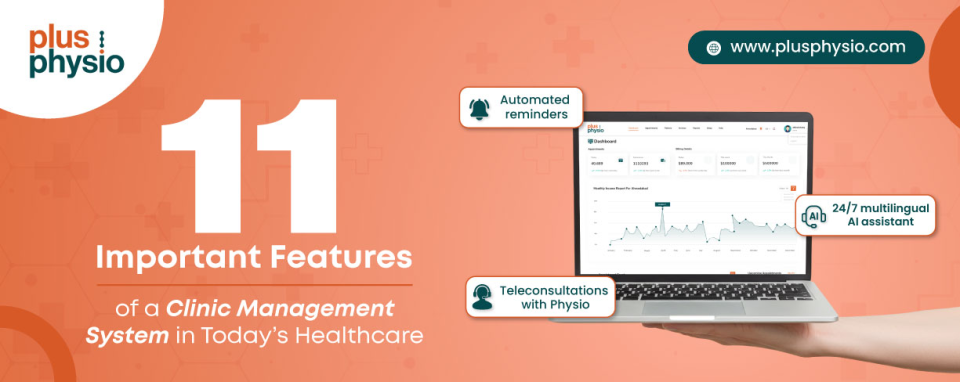In the niche of healthcare, physiotherapy is no longer limited to manual treatments and handwritten notes. A new era has arrived—where technology meets ethics, and patient care is smarter, faster, and more accountable than ever.
To delve into this vital intersection, Plus Physio sat down with Dr. Alpa Purohit, Principal at AIMS Physiotherapy College and a respected ethical committee member in the field. With years of experience as a clinician, researcher, and academic leader, she shared powerful insights on how standardized protocols, digital tools, and ethical accountability are reshaping physiotherapy in India (and beyond).
This blog brings you the core highlights from the conversation, sharing highlights on not just the role of digitalization and AI in Physiotherapy, but also how they intersect with standardised and Ethical Physiotherapy practice.
Standardization in physiotherapy ensures consistent, high-quality care across practitioners, reducing errors and improving patient outcomes. It also helps align ethical practices with evolving technologies.
According to Dr. Purohit, standardized practices ensure consistent, high-quality treatment regardless of where a patient seeks care. The National Council of Allied Health Care Professionals (NCHP) has already introduced the “One Nation, One Syllabus” approach to align physiotherapy education and practice across India.
Clinical Practice Guidelines (CPGs) play a major role in:
-
Evidence-based assessments
-
Standard treatment protocols
-
Flexible yet reliable decision-making
-
Continuous professional upgrading
For physiotherapists, staying updated isn’t optional—it’s an ethical responsibility.
Digital health tools aren't just add-ons—they're transforming how therapists treat, monitor, and support patients.
Key digital therapeutics Dr. Purohit highlighted include:
AI-powered chatbots
Virtual Reality therapy sessions
Wearable devices for vitals, mobility, and sleep tracking
Mobile apps for CBT and mindfulness programs
These tools improve:
Accuracy of data
Remote monitoring
Long-term follow-up
Patient engagement
They bring physiotherapy closer to global standards—without replacing the human touch.
India faces a shortage of physiotherapists, especially in rural regions. Dr. Purohit explained how telerehabilitation is closing that gap.
Through digital consultations and remote assessments, therapists can:
-
Monitor progress virtually
-
Modify treatment plans on time
-
Educate patients and caregivers
-
Extend quality care beyond clinic boundaries
It’s a leap toward global alignment in rehabilitation practices.
Digital documentation is replacing handwritten records—and for good reason. However, without standard protocols, it can be risky.
Concerns Dr. Purohit emphasized:
Data theft
Misuse of patient information
Lack of confidentiality safeguards
Poor auditability
Digitization isn’t just about convenience—it must be handled responsibly.
When asked about global alignment, Dr. Purohit stressed that India is already moving in the right direction with technology adoption. Wearables, digital platforms, and remote access tools now support:
Real-time monitoring
Treatment customization
Cross-border patient access
Better research opportunities
She also highlighted the rise of physiotherapy entrepreneurship programs and research grants—encouraging innovation that’s both ethical and patient-friendly.
Ethics in physiotherapy begins with respect for patient priorities. Dr. Purohit shared a powerful incident where clinical observation differed from what the caregiver believed was the main issue. Instead of imposing her decision, she first acknowledged the patient’s preference—reflecting true ethical care.
Ethics, according to her, revolve around:
Patient autonomy
Informed decision-making
Respectful communication
Cultural sensitivity
And technology should support this—not overshadow it.
Giving patients access to their own therapy data builds confidence and motivation. Digital records improve:
-
Progress tracking
-
Transparency in treatment
-
Accountability of therapists
-
Patient empowerment
This shared visibility creates lasting trust between patients and practitioners.
Dr. Purohit believes that therapists must first learn to use digital tools correctly. Only then can they:
Provide accurate data
Access updated research
Deliver better outcomes
Maintain ethical integrity
Technology is not a replacement—it’s a responsibility.
Electronic Health Records (EHRs) and digital systems reduce manual errors and protect sensitive information. However, Dr. Purohit insists on three key safeguards:
Accountability & Confidentiality
Guidance and Support for Patients
Prevention of Data Misuse
Digital responsibility is a shared duty—not a checkbox.
Absolutely, says Dr. Purohit.
Regulatory bodies should:
Standardize digital physiotherapy records
Align with broader healthcare systems
Improve tracking and compliance
Strengthen patient data security
It’s not just futuristic—it’s essential.
AI can make auditing faster and more accurate, especially in research and outcomes assessment.
But Dr. Purohit adds a crucial disclaimer:
“Humans can develop AI, but we cannot replace humans with AI.”
Confidentiality, judgment, and empathy still rely on people.
From spinal surgeries to neurological conditions, AI-backed systems are reducing complications and accelerating recovery. Advanced technologies are helping physiotherapists:
-
Plan safer interventions
-
Predict risks
-
Personalize rehabilitation
-
Shorten recovery timelines
AI is not a substitute—it's a clinical ally.
Dr. Purohit highlighted how platforms like Plus Physio make physiotherapy practice more seamless and patient-centric.
With features like:
Appointment scheduling
Patient data access
Financial tracking
Digital records
Performance monitoring
…therapists can focus more on care and less on paperwork.
Her recommended approach:
1. Begin with small pilot groups
2. Train in-house teams on digital tools
3. Choose the right platform aligned with your clinic’s framework
4. Ensure compatibility across devices (mobile/tablet)
5. Use different software for OPD and IPD setups
Digital transformation should be strategic—not rushed.
The future of physiotherapy lies in the intelligent fusion of technology, ethics, and patient-first care.
From standardized guidelines and telerehabilitation to AI audits and digital transparency, Dr. Alpa Purohit’s insights reveal a clear message:
Technology should enhance physiotherapy—not replace its soul.
With ethics at the core and innovation as an enabler, the profession is entering a new era of accessibility, accountability, and excellence.
Check out the verbatim transcript of the conversation between Dr. Alpa Purohit and Hemanshi in original format.
Dr. Alpa Purohit’s Take on the Intersection of Tech and Ethical Physiotherapy
H
Hemanshi
Hello and welcome to another episode of Plus Physio. Here, we will be giving insight into how physiotherapy, technology, and ethics are linked together. Today, I am honored to be here with a very special guest, Dr. Alpa. She is a Principal at AIMS Physiotherapy College and also a respected member and voice in the physiotherapy field. So ma’am, to begin with, I would like to understand how your journey has been, starting from education up to reaching this honored position.
AP
Dr. Alpa Purohit
Thank you, Himanshi, for providing me with this wonderful opportunity. The journey was quite exciting. My role as a Principal and Ethical Committee member is to deliver and monitor what is right and what is wrong. My responsibilities as a Principal are delivered through two aspects.
The first is the professional aspect, and the second is as a researcher and clinician. Professional practice is based on my knowledge, experience, accountability, active communication with patients, students, staff members, and the entire organization. Along with that, I have to provide a very good and helpful environment to all the members.
My second role as a clinician and researcher is to follow the rules and regulations of ethical guidelines.
H
Hemanshi
That's amazing. Let’s start with something foundational. I would like to ask you: why is it important to follow standardized practices and protocols across all clinics?
AP
Dr. Alpa Purohit
Standardization ensures high-quality treatment for patients wherever they are in the country. As per NCHP guidelines—that is, the National Council of Allied Health Care Professionals—a syllabus called “One Nation, One Syllabus” has been designed specifically for the physiotherapy profession.
I think it will bring great outcomes in the clinical aspect. Standardization is necessary in physiotherapy. There are certain guidelines available, such as Clinical Practice Guidelines (CPG). In those guidelines, we have to follow specific assessments that are evidence-based, follow appropriate treatment plans, and ensure the guidelines are applied flexibly.
Along with that flexibility, we have to equip ourselves and invest in education so that we can treat our patients with new approaches and updated guidelines.
H
Hemanshi
So, do you think digital tools help us enforce evidence-based treatment protocols?
AP
Dr. Alpa Purohit
Digital therapeutics are innovative and designed on the basis of evidence. Different tools are available, like AI-monitored chatbots, virtual reality therapy sessions, and wearable devices. With wearable devices, we can track and monitor vitals, sleep patterns, etc.
There are also certain mobile apps available that are very helpful in delivering Cognitive Behavioral Therapy. Along with CBT, they also provide mindfulness treatment programs. There are many benefits of digital therapeutics—they provide very accurate data and make tracking and monitoring easier.
H
Hemanshi
When it comes to tracking patient improvement digitally, does it support or benefit research and physiotherapy, especially in the education sector?
AP
Dr. Alpa Purohit
Yes, of course. Technology gives us very beneficial results in tracking patient data. Nowadays, telerehabilitation is also available. Through that, we as therapists can track the patient’s progress and outcomes.
Then, we can design or modify treatment plans accordingly. In that aspect, it is very helpful for educating patients.
H
Hemanshi
So do you think there are any risks if we don’t follow standardization in digital documentation and protocols?
AP
Dr. Alpa Purohit
Yes, of course. Previously, when we were in college, we used to enter all patient details in registers. Handwritten documentation was a little time-consuming. Compared to that, digital documentation has many benefits. But along with those benefits, if we do not follow standardization, the data might be at risk. There are chances of theft as well as misuse of patient data.
H
Hemanshi
Definitely. Do you think technological upgrades in Indian physiotherapy will align with global rehabilitation standards? We’ve seen that many compliances are followed outside India.
Do you think integrating those compliances here would benefit the physiotherapy field?
AP
Dr. Alpa Purohit
Yes, of course. In India, we are now using new technological concepts like telerehabilitation. Through that, we can reach any patient in the world. In India, there is a shortage of physiotherapists, but with technology, we can connect anywhere. Along with that, there are many wearable devices available that provide real-time monitoring.
We can see patient progress, treatment plans, and modify them from anywhere in the country. I would also like to add that in India, many physiotherapy entrepreneurship programs and research grants are available.
These support researchers in developing new technical tools that are eco-friendly, user-friendly, and beneficial for both patients and therapists.
H
Hemanshi
Correct. That was all about how standardization and technology connect. Now let’s shift to how ethics are integrated into physiotherapy. How do you see ethics and accountability evolving in physiotherapy today?
AP
Dr. Alpa Purohit
As an ethical principle, we must respect the patient first. We have to respect the patient’s priorities.
AP
Dr. Alpa Purohit
We must respect the patient’s needs and preferences. I would like to share an example of one of my patients. A week ago, a patient’s daughter called me and said her mother was not able to walk properly. She said, “Madam, what can we do? I have consulted a neurophysician, and medicine has been prescribed. Is physiotherapy necessary?” The patient lived outside Ahmedabad.
I asked her to share a video of some movements of the lower and upper limbs. She did, and the lower limb was near normal, and the patient was able to move it. But compared to the lower limb, she could not elevate the upper limb.
So, I advised the daughter that the patient required upper limb physiotherapy more than lower limb therapy. But the daughter’s priority was that her mother could not walk. In that case, I had to respect the patient’s preference.
H
Hemanshi
Definitely. That was great. We understand how real-life incidents help us reflect and improve physiotherapy practices. I would like to ask: will the digital documentation process improve transparency between therapists and patients?
AP
Dr. Alpa Purohit
Yes, of course. Through digital documentation, patients can easily track their progress and see outcomes.
It helps them stay motivated. It also builds transparency between therapists and patients, creating a trustworthy relationship.
H
Hemanshi
Okay. What role does technology play in making therapists, especially physiotherapists, more accountable and reliable toward patients?
AP
Dr. Alpa Purohit
As therapists, we must first know how to use technology. Along with that, we must provide correct and accurate data to patients. This helps build a transparent relationship between patients and therapists.
Technology also helps physiotherapists access the latest research, so we can provide better healthcare outcomes to our patients.
H
Hemanshi
That's great. How does giving patients access to their therapy records support ethical practice and empowerment?
AP
Dr. Alpa Purohit
Digital documentation and Electronic Health Records (EHRs) are very important. Nowadays, they reduce errors compared to handwritten records. But therapists must know how to use digital documentation.
Also, there are three key considerations: first, accountability and confidentiality; second, providing guidance and support to patients; and third, ensuring that data is not misused.
H
Hemanshi
Definitely. Do you think regulatory bodies should make digital documentation processes mandatory in the future?
AP
Dr. Alpa Purohit
Yes, of course. Regulatory bodies are necessary. Our physiotherapy healthcare documentation systems or software should align with other medical healthcare systems.
Regulatory bodies should encourage standardized documentation systems so we can provide effective healthcare treatment in physiotherapy.
H
Hemanshi
Correct. Talking about AI in physiotherapy—do you think AI will help with ethical audits in the future?
AP
Dr. Alpa Purohit
Yes, of course. AI can be a great help. With AI tools in physiotherapy research, we usually use different outcomes as tools, and with AI, we can easily audit and calculate those outcomes.
But confidentiality of data must be maintained. At the end, I would like to say: humans can develop AI, but we cannot replace humans with AI.
H
Hemanshi
Definitely, ma’am. That’s very true. So ma’am, how does AI support clinical decision-making when it comes to complex cases?
AP
Dr. Alpa Purohit
Yes, of course. Previously, spine surgeries were performed as open surgeries. Due to that, there were many chances of long-term complications like nerve damage and muscle weakness.
Now, AI-supported techniques and software help patients recover from specific pathologies, and the recovery time is shorter.
H
Hemanshi
Ma’am, could you help our viewers understand why Plus Physio should be used and what the benefits are?
AP
Dr. Alpa Purohit
Yes, of course. Previously, spine surgeries were performed as open surgeries. Due to that, there were many chances of long-term complications like nerve damage and muscle weakness.
We can schedule appointments through the software and save time compared to manual tracking. So, use Plus Physio software.
H
Hemanshi
Thank you so much, ma’am, for giving us insights about Plus Physio. So ma’am, how can patient tracking in physiotherapy be done using such software?
AP
Dr. Alpa Purohit
We should start by practicing in a small group with a pilot project. Second, we should train our team through value-based in-house training programs on how to use digital tools and documentation.
Third, we must choose the right platform—one that aligns with the clinical framework and supports mobile and tablet use. For example, there are different tools available. We have to choose platforms aligned with clinical needs, like OPD-based software or IPD-based software.
They are different, and we cannot treat them as the same. The software must align with our clinical framework and be usable on mobile devices and tablets.
H
Hemanshi
Thank you so much, ma’am, for joining us here and sharing such insightful details about how ethical practices are integrated into physiotherapy.
AP
Dr. Alpa Purohit
Thank you, Himanshi, and thank you, Plus Physio, for providing me this opportunity.






